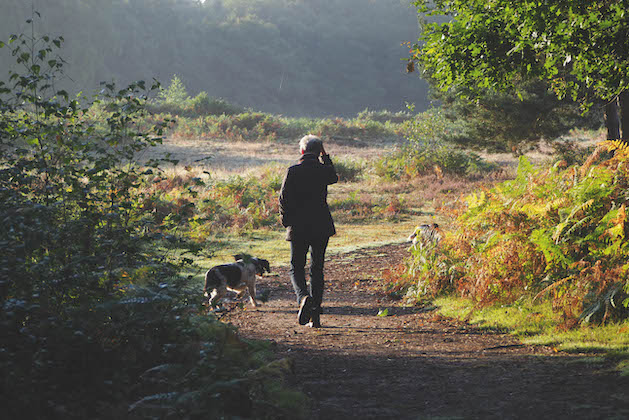Dog walking facts – yes, taking your four-legged companions out does you both good
David Tomlinson is a firm believer that dog walks are beneficial to the health of mind and body and he has the research to prove it.

Walking the dog - good for the health of both dogs and walkers
You would tend to think that for dogs, the dog walking benefit is more physical than mental, but a recent study, undertaken by Sarah Yarborough of the University of Washington, suggested that taking your dog for walks helps to keep its brain alert. (Read our list of the best dog beds.)
Dog walking facts
Ms Yarborough’s research revealed that dogs which got little exercise were more likely to develop a dog form of dementia, known as canine cognitive dysfunction (CCD). It’s a very similar condition to the human disease of Alzheimer’s and it includes memory problems and difficulties with spatial awareness. Most of us have come across sad old dogs that don’t seem to know what they are doing and which barely recognise their owners. They are almost certainly suffering from CCD.
The study involved 15,000 dogs and found that the chances of a dog having CCD rose by 52% with each year of age. However, among dogs of the same breed and age, with similar health, the chances of getting CCD were 6.47 times higher in those that weren’t taken out for walks, compared with those that were exercised. The reasons were complex, but Ms Yarborough thought that exercise may benefit the brains of dogs by reducing molecules called pro-inflammatory cytokines. So the scientific dog walking facts show that exercise does your companion good. You don’t have to a PhD in canine health to work out that a dog that is exercised regularly is going to be fitter and brighter than one that isn’t. (Read how to teach your dog to walk at heel.)
How to tell if your old dog is happy and healthy
My test of an old dog is the three Ws: if the dog still likes to go for walks, wolf its food and wag its tail, it can’t be doing too badly. My old spaniel Rowan, now aged 15½, still passes all three tests with flying colours.
Signs of ageing
It might be anthropomorphic to suggest that she enjoys her walks, but she shows every sign of doing so. She still likes to get her nose down and have a good hunt, and does a surprising amount of cantering for such an old dog. Her eyesight isn’t as good as it was and she is quite deaf, so on occasion, especially on a walk she is unfamiliar with, she will wander off in the wrong direction. I haven’t yet lost her for more than a couple of minutes, but it’s sensible to watch her more carefully than a young dog that can hear the recall whistle. (Read our advice on hearing loss in dogs.)
Another of my dog walking facts – for younger dogs, walks are the natural time to train them. Sit and stays, walking to heel and retrieves can all be incorporated into every walk. If the walk is short and the dog needs lots of exercise, memory retrieves are the answer, ensuring that the dog gets plenty of galloping without you having to go far.
Walking is good for young dogs’ mental health, too, as the more supervised experiences they get, the better they cope with the distractions and temptations of life, or the shooting field. My three-year-old sprocker, Emma, for example, is so used to encountering muntjac and roe deer that she virtually ignores them.
All about control
The essential for walking a dog off the lead in the countryside is control, of course, coupled with good recall. (Read our guide on how to use a slip lead.)








